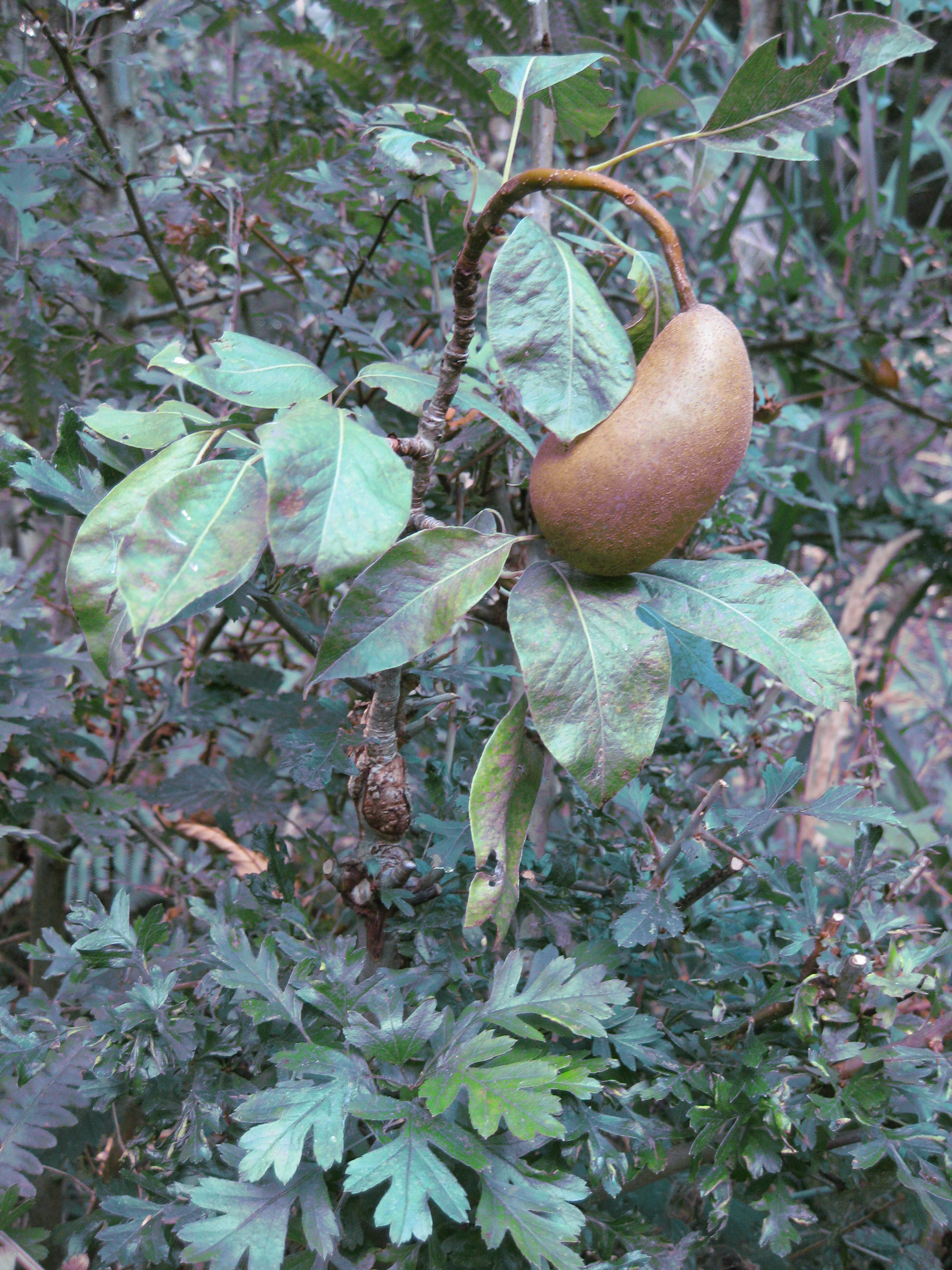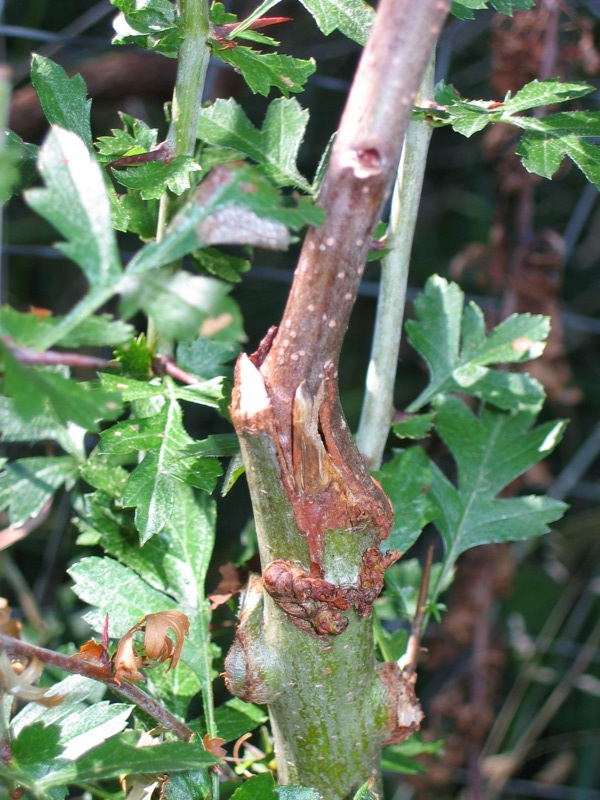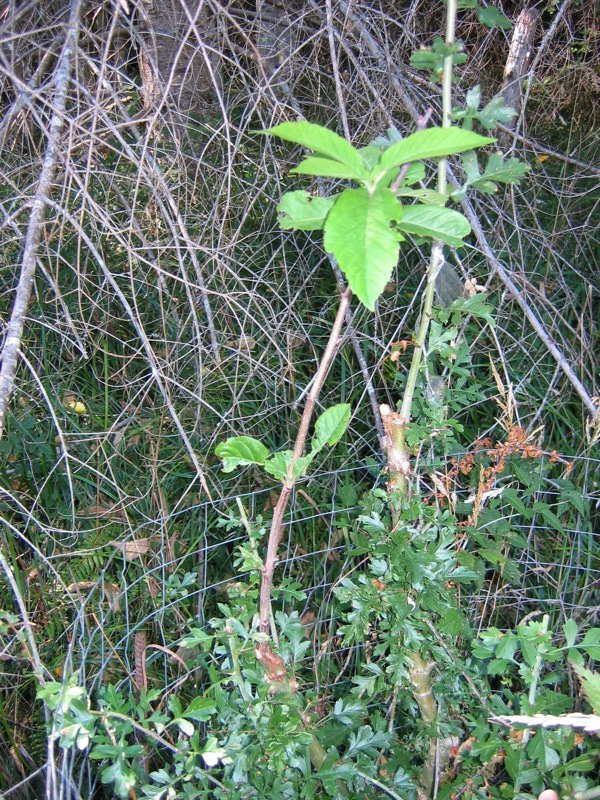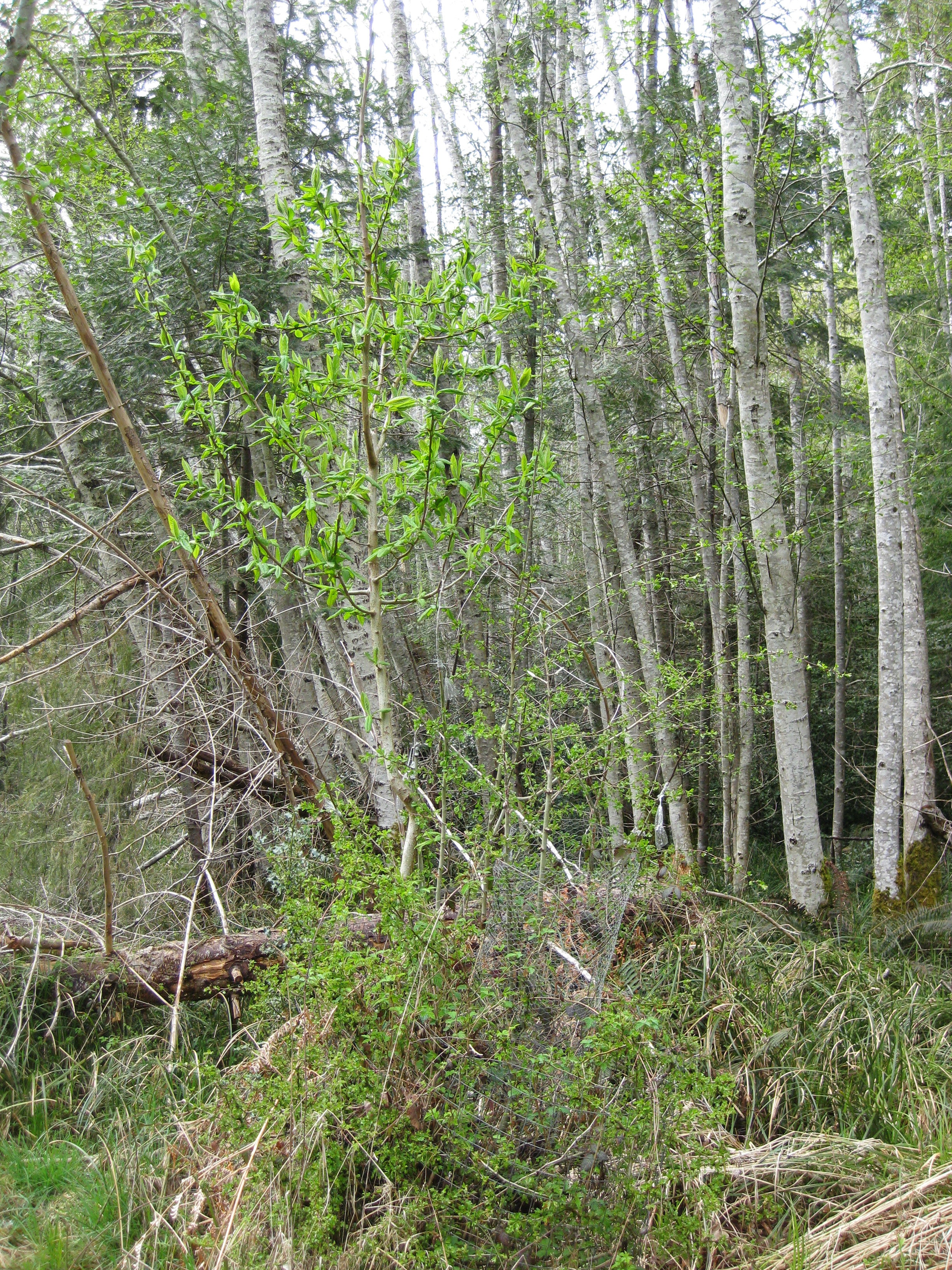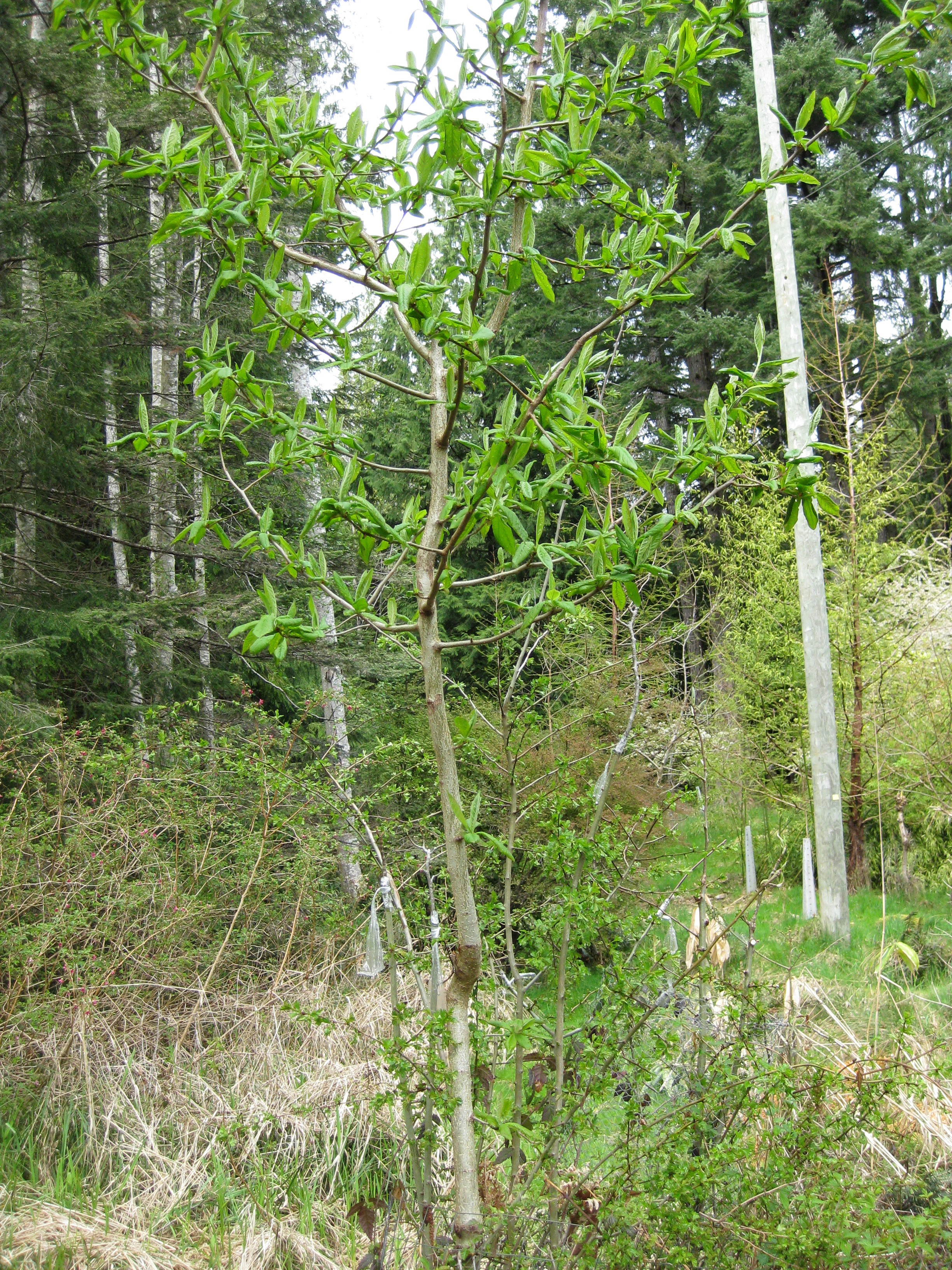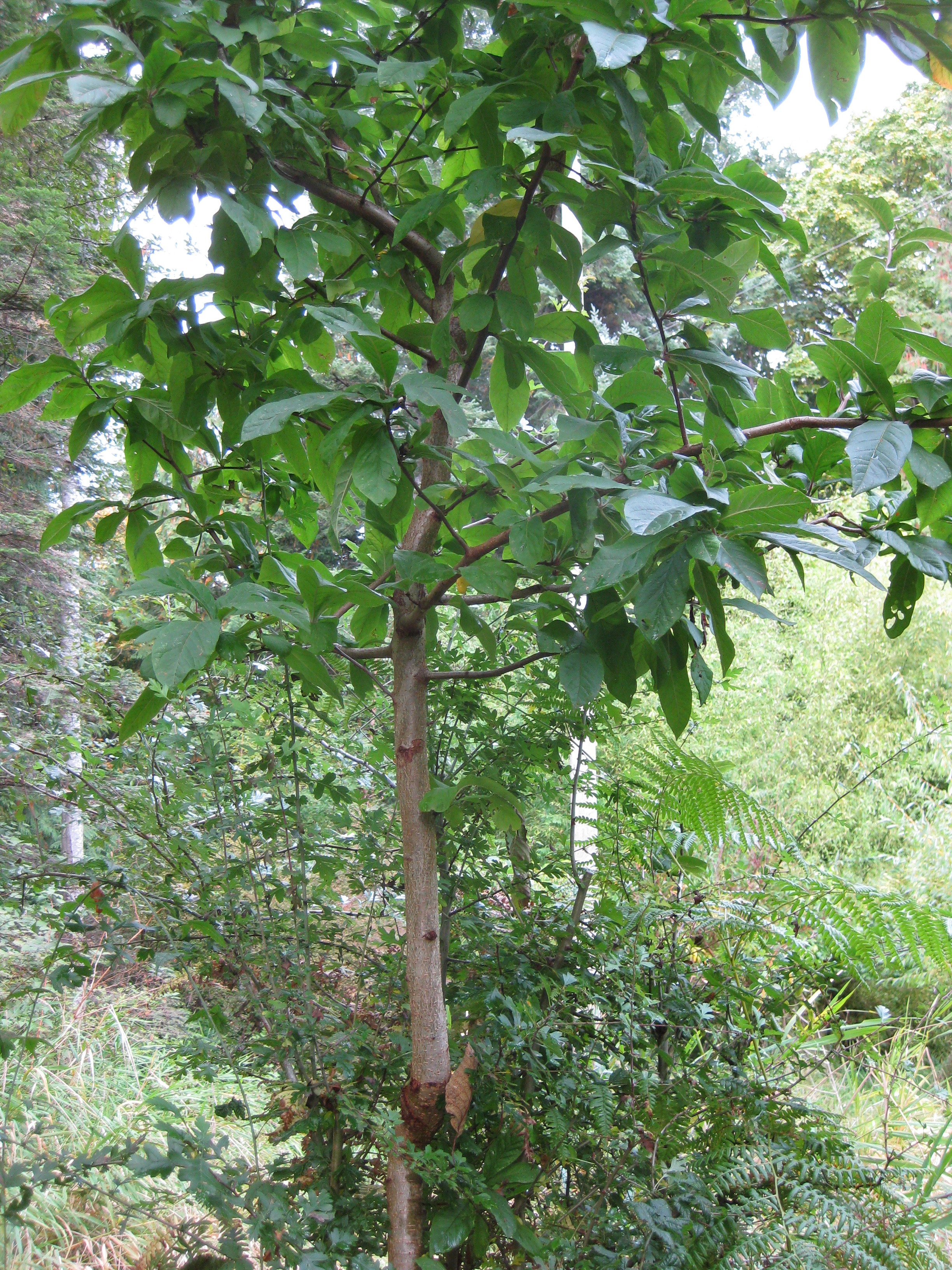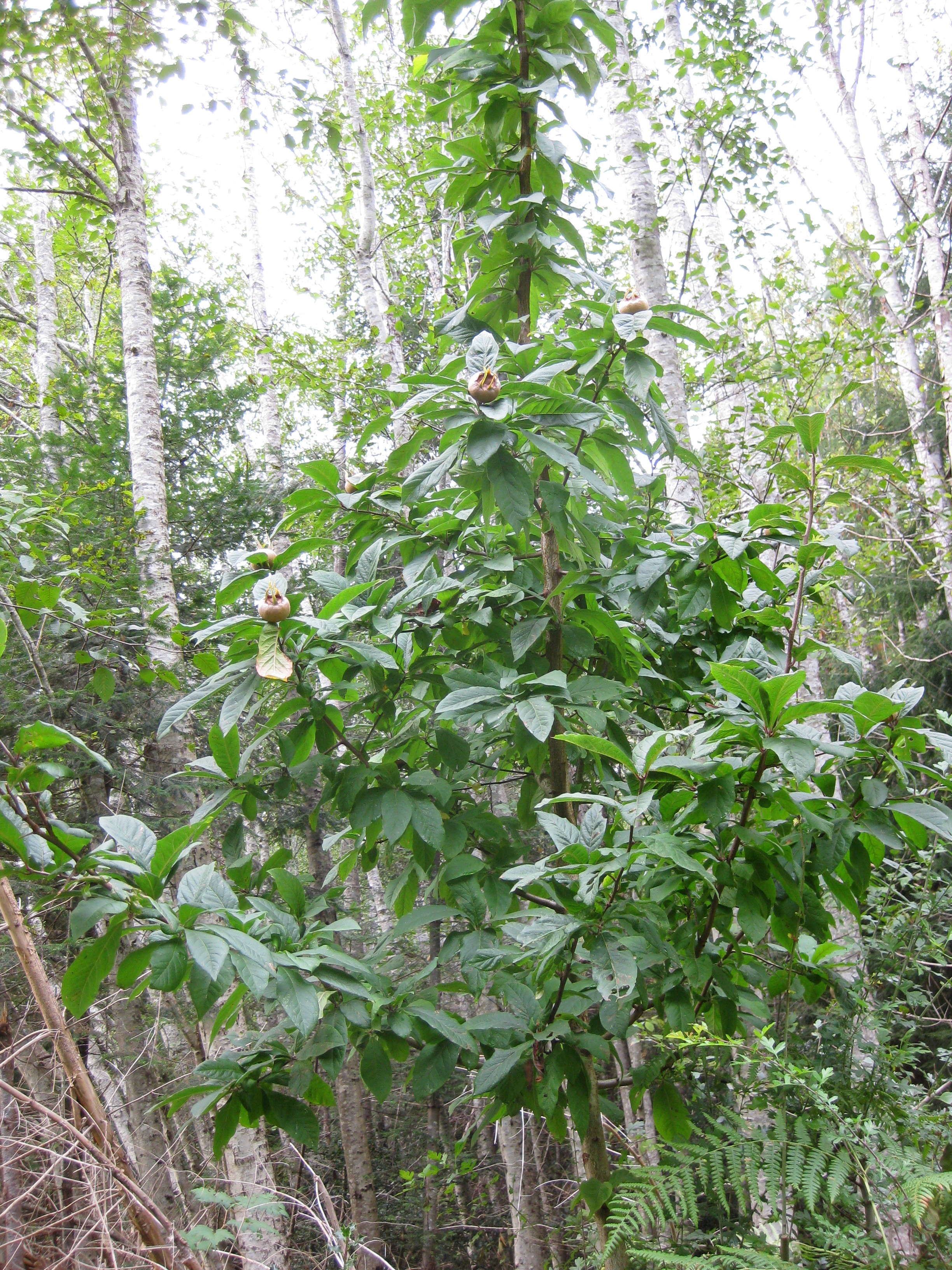Hyperorganisms
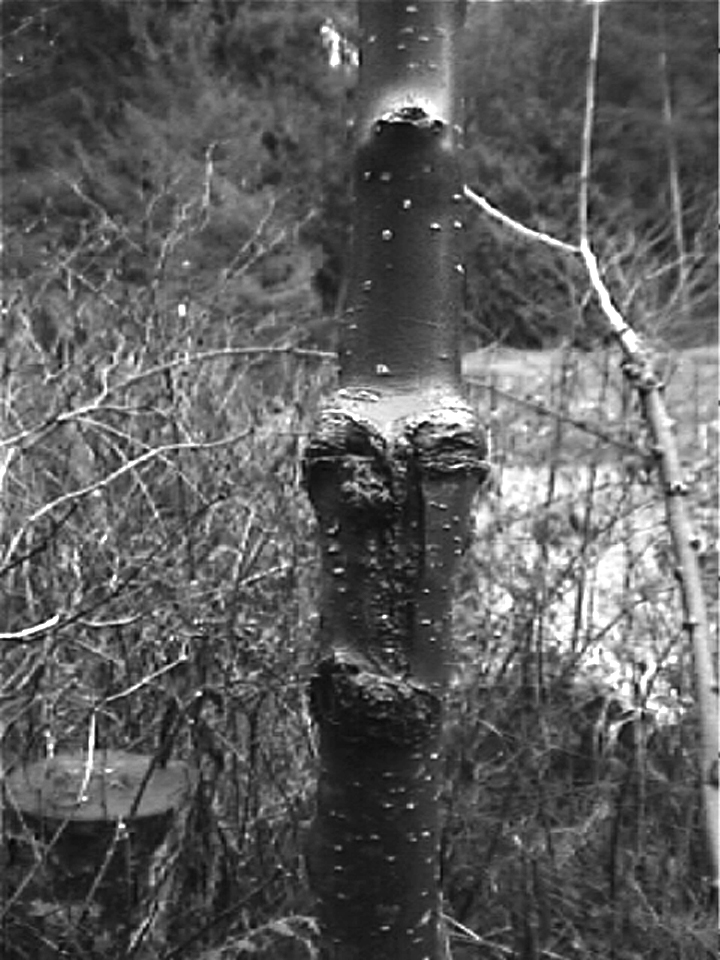
Winter Banana apple wedge grafted to Malus fusca
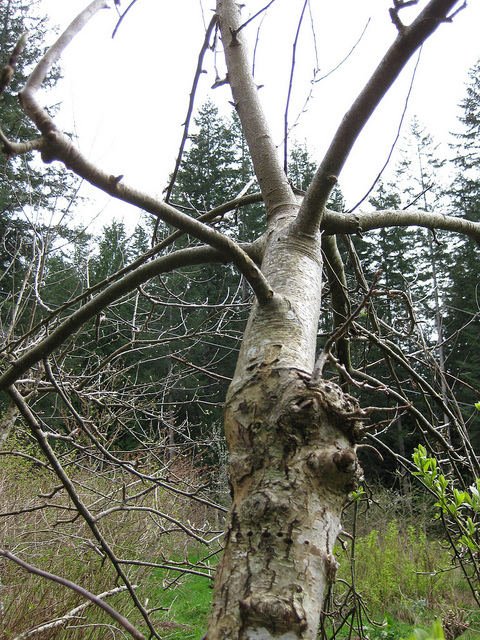
Northwest Greening crown grafted to Malus fusca
For the past dozen or so years, I have been performing various 'botanical re-mixing' experiments, investigating the capacity of native and
naturalized plants to serve as 'scaffolding' for related species that offer higher food yields.
I am particularly interested in creating what I call hyperorganisms which are assemblages of two or more species that form a living system with characteristics of all the component parts. For example, I have grafted Bartlett Pear to wild hawthorn, which creates a hyperorganism with its own, built-in barbed wire fence which protects the delicious fruit from roving deer.
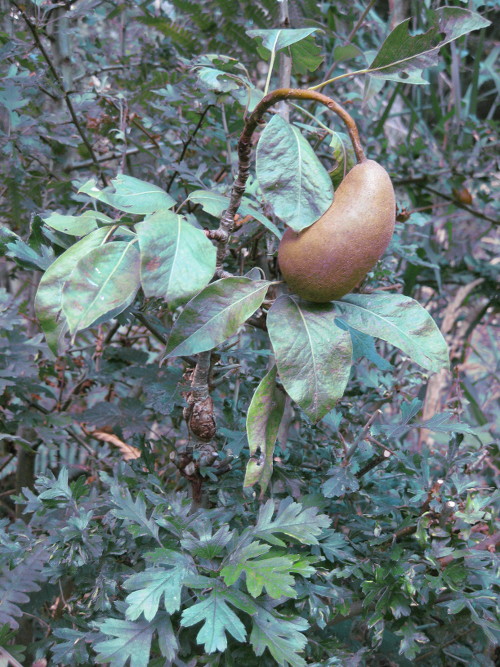
pear on hawthorn hyperorganism
I have successfully
grafted numerous cultivars of domestic apple
(Malus domestica) to the Pacific crabapple
(Malus fusca), a wild 'proto-apple' species native to the Northwest Coast of North America.
Malus fusca is a small tree that is very tolerant of poor conditions such as waterlogging and salt spray and shows considerable genetic variability. It often comes up in thickets of salmonberry
(Rubus spectabilis), which is thorny and thus protects the young crabapple trees from deer browse. The crabapples, while edible, are relatively small and in contrast to many apples of cultivated origin, need to be dried or pickled to be enjoyed. So why not create a
hyperorganism to combine its hardy characteristics with the deliciousness of cultivated fruits?
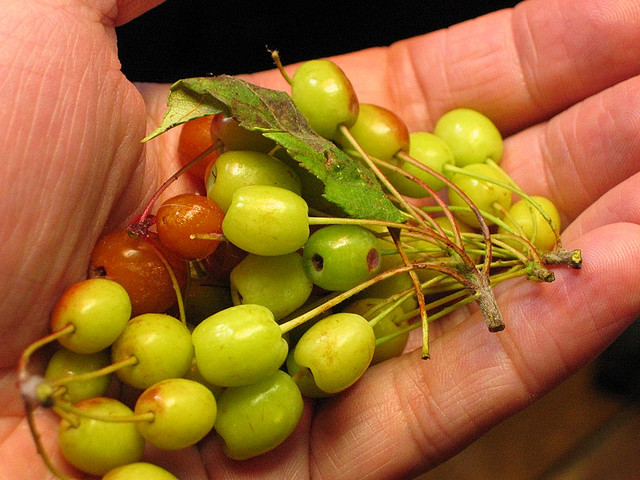
Malus fusca fruit cluster
In fact, Malus fusca makes a compatible rootstock for many domesticated apples though it shows some variability from individual to individual in its willingness to play host to exotic twigs. The trees show resistance to many common apple diseases and their small size makes harvesting easy. I find the tendency to send up suckers useful, as it provides me a continuous supply of new places to graft. I have also 'top worked' several older trees, using a technique called 'crown grafting' (which is a little brutal), but more typically by wedge grafting twigs onto the ends of existing branches. These 'repurposed' trees now provide bushels of fruit on a site once unsuitable for a conventional orchard because of its seasonally waterlogged soil.
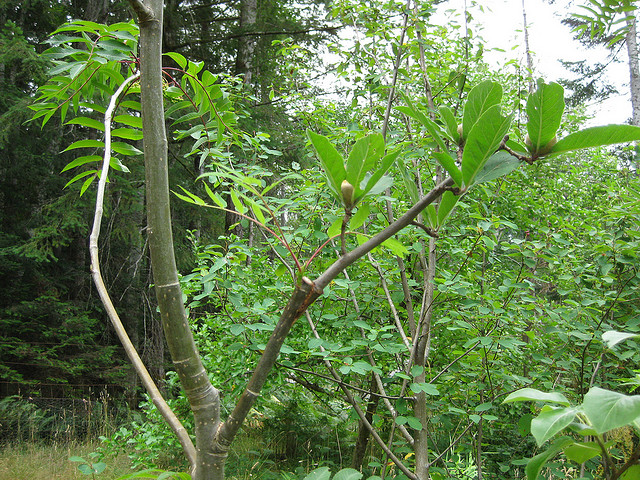
Medlar grafted to Mountain ash
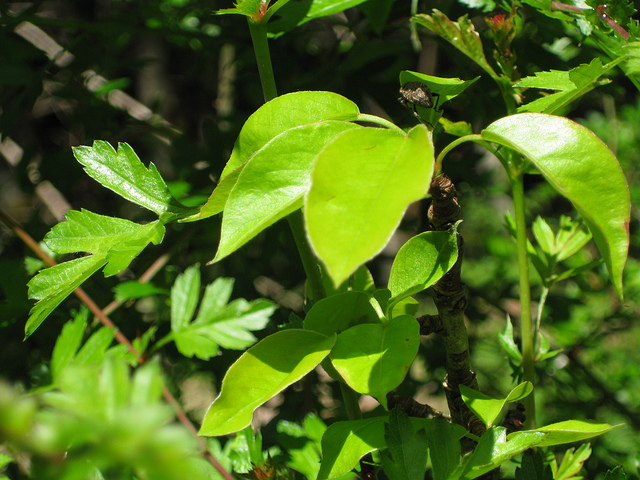
Pear grafted to Hawthorn
Yet wilder and more contrasting hyperorganisms are possible! In addition to my previous example of the Bartlett Pear grafted to the hawthorn
Crataegus monogyna, I've succeeded in grafting pears to Mountain ash
Sorbus aucuparia. Medlars
(Mespilus) also seem compatible with both the Sorbus and the Crataegus and I have one Medlar that bears heavily on a hawthorn rootstock, (see slideshow at the bottom of this page.)
Grafting can also be used to repair damaged trees. Here are a couple of images showing the 'before' and 'after' instance of an apple tree that had been split, which I then repaired using a 'bridge graft' made up of the watersprouts coming up from around the trees base. I grafted these around the split to convey sap to the crown of the tree and in a few years these watersprouts thickened and encircled the wound, effectively giving the tree a new lease on life....
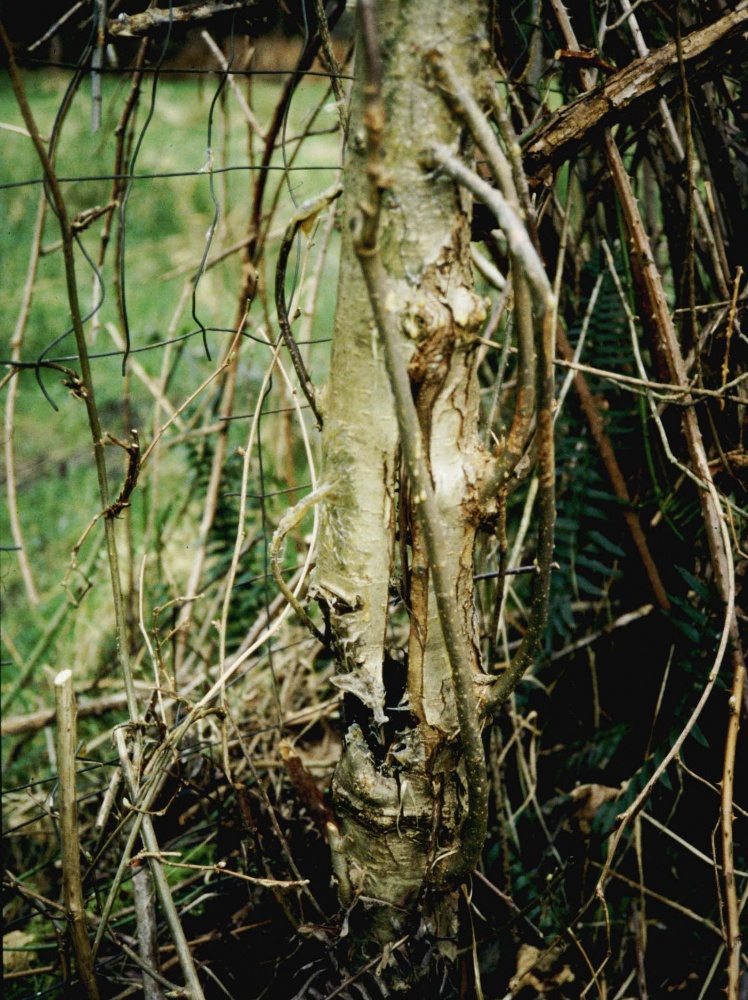
Split Malus fusca trunk bridge grafted for support
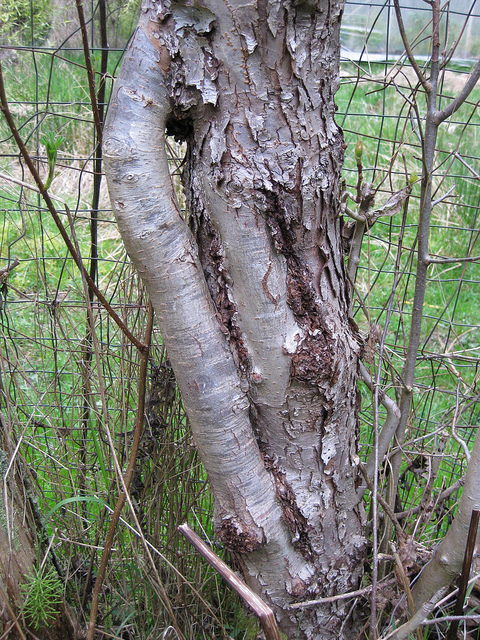
Same bridge graft a few years later
Slide Show:
Japanese pear on Crataegus monogyna
Summer 2018, A Japanese pear scion doing splendidly on Hawthorn, Crataegus monogyna, the common hawthorn.
bartlett pear on hawthorn
Here is a shot of a Bartlett Pear fruiting after being grafted to a hawthorn - Crateagus monogyna.
It seems to be a compatible graft complete with a built in 'barbed wire fence' to repel the browsing of deer.
medlar on hawthorn graft
Here is a close-up of the simple whip and tongue grafting technique used to joins a Medlar (Mespilus germanica) scion to a hawthorn (Crateagus monogyna).
medlar on hawthorn graft early
Medlar (Mespilus germanica) scion leafing out on its Crateagus monogyna rootstock.
medlar on hawthorn early growth
After a couple of seasons, the medlar (Mespilus germanica) scion has taken and is starting to branch out over its hawthorn rootstock.
close up of early medlar on hawthorn
A close up of the previous slide showing the medlar well established on its hawthorn rootstock.
hyperorganism
The medlar (Mespilus germanica) is now very well established on the hawthorn (Crateagus monogyna).
Both exist independently but together they form a kind of 'hyperorganism.'
hyperorganism with fruit
The medlar (Mespilus germanica) is now bearing its characteristic anus-shaped fruit! The hyperorganism is protected from deer by the hawthorn's curtain of thorns.
Japanse pear and Medlar on hawthorn
Wide shot of a Japanese pear and Medlar grafted to a common hawthorn, Crataegus monogyna. Summer 2018, Whaletown BC.

